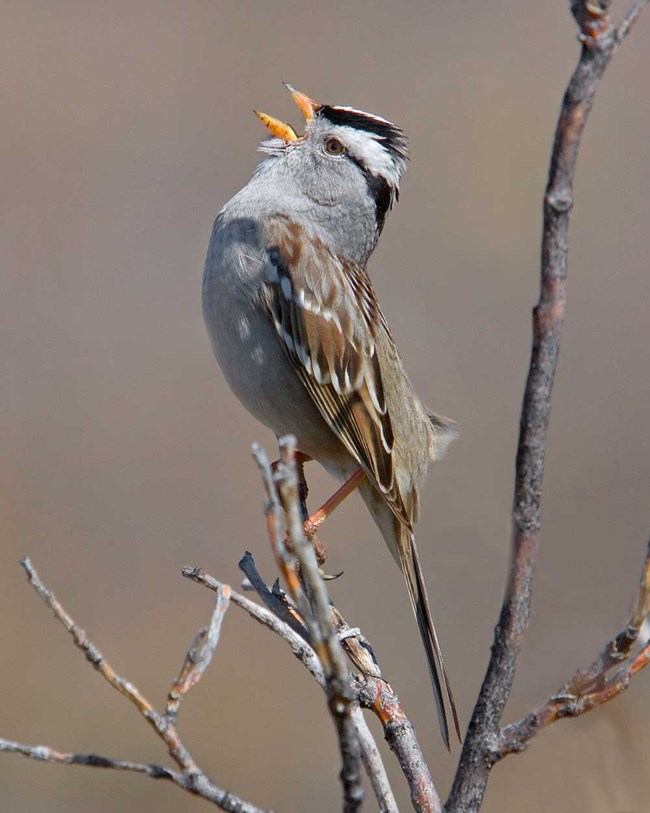
NPS/Ken Conger
When it comes to monitoring animal species in the Central Alaska Network, we chose species that are spread across the trophic levels of park ecosystems. By doing this, we will have a better chance of observing change wherever it may come. We can try to forecast what kinds of change may occur, but it's harder to predict precisely where it will happen, or what form it may take.
Passerines (perching birds that make up more than half of all bird species) are important components of park ecosystems. They provide key ecosystem functions, such as seed dispersal, and they represent both grazers and insectivores within our monitoring framework. They include a wide variety of species that occupy many habitats over many environmental gradients and may represent unique response variables relative to changes in vegetation and climate. Many species of passerines respond quickly to changes in their environment, making them good indicators of local, regional, and sometimes global, ecosystem change.
Impacts of climate change are particularly strong in northern latitudes and birds nesting in Central Alaska parklands could be especially susceptible to the effects of a warming climate, such as increased shrub cover and changes in food availability. Changes in passerine community structure, and timing of passerine migration and nesting seasons, could provide new and important insights into how a changing climate is affecting the ecosystems and biodiversity in Central Alaska.
We monitor passerines in all Central Alaska parklands to:
- Estimate abundance and trends of common passerine species
- Identify the factors driving the trends in abundance of passerine birds
- Detect the dates of arrival (first detection) and peaks in seasonal detection rates, detect changes in dates over time as well as drivers of change
- Provide demographic information for species of concern, including Bank Swallow, Olive-sided Flycatcher, Gray-cheeked Thrush, Arctic Warbler, Blackpoll Warbler, and Rusty Blackbird
Contact: Carol McIntyre
Songbirds in Arctic and Subarctic Alaska
Learn more
Last updated: April 30, 2025
